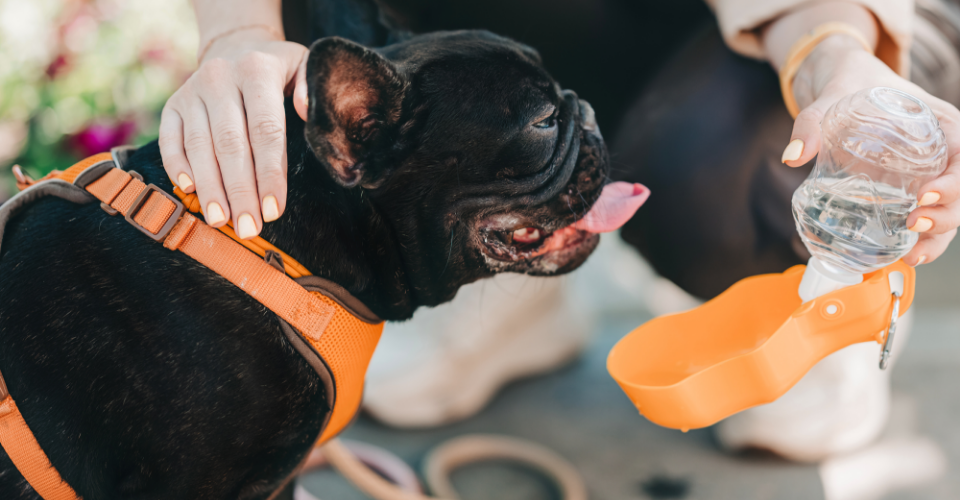Staying Active and Staying Safe In Warmer Weather
The summer season brings the promise of outdoor adventures with our furry friends, but it also presents challenges that demand our attention. Walking your dog in the summer heat requires careful consideration – from hot pavements to heatstroke, there are a few potential hazards to keep in mind during your summer dog walks.
The Time and Place for Walkies
Timing is crucial during the summer months. Opt for walks in the cooler parts of the day, such as early mornings or late evenings. Avoid the hottest hours, between 10 am and 4 pm, to prevent discomfort from scorching pavement. Cooler temperatures reduce the risk of paw pad burns and make the walk more enjoyable for your dog.
Seek walking paths that offer shade to prevent your dog from prolonged exposure to direct sunlight. Shaded areas, provided by trees, buildings, or covered trails, offer relief from the heat. Plan your route to include these spots, allowing your dog to rest and cool down when needed.
On extremely hot days, opt for shorter walks to reduce sun exposure. Multiple shorter walks during cooler hours ensure your dog gets enough exercise without risking overheating.
Protect Your Pooch
Hydration is key: Enough water is crucial for both you and your dog. Carry a portable water bottle and a collapsible bowl for quick water breaks. Dogs can't cool down as efficiently as humans, so offer water every 15-20 minutes, especially on humid days.
Take Breaks: Avoid overexertion by allowing your dog to take breaks in shaded areas during hot walks. If your dog displays distress, find a cool place to rest and offer water immediately.
Sun Protection: Protect your dog from sunburn by applying pet-safe sunscreen to areas with thin fur, like the nose and ears. Choose sunscreen formulated specifically for dogs to ensure their safety, as human sunscreen may contain harmful ingredients.
Signs of Heatstroke: Heatstroke is a serious concern in the summer. Recognise symptoms such as excessive panting, weakness, or vomiting. If you suspect heatstroke, move your dog to a cool area, wet their body, and contact your veterinarian immediately.
Individual Needs: Consider your dog's breed and individual needs when planning walks. Take extra precautions for breeds with thick coats or underlying health conditions.
Indoor Activities: For scorching days or rainy weather, provide alternative indoor activities. Engage your dog with puzzle toys, treat-dispensing toys, or hide-and-seek games to keep them mentally stimulated without exposing them to the weather.
Protect Their Paws
Hot pavement poses a threat to your dog's paw pads. Check the temperature with your palm, and if it's too hot for you, it's too hot for them. Consider using dog booties or paw balm to create a protective barrier. Alternatively, choose grassy trails to minimise exposure to scalding pavement.
Regularly check your dog's paw pads for cracks, blisters, or burns, especially after hot walks. Address any issues promptly to prevent infections.
Prioritise your dog's comfort and stay attuned to their needs. Your summer outings can be a positive and safe experience for the whole family!



